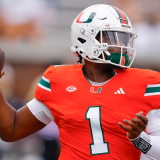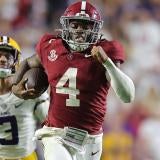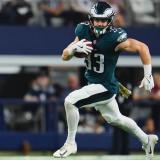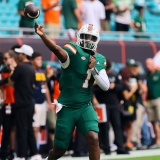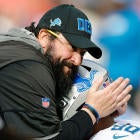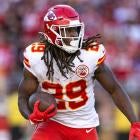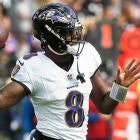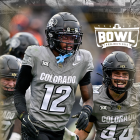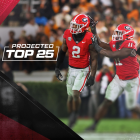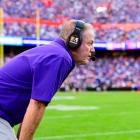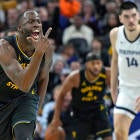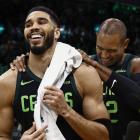The perfect draft is an elusive thing. You have to be on the clock when the guy you want is still available, so much of nailing the draft depends on being lucky enough for the right players to fall into your lap.
But having a perfect strategy for attacking the draft is not nearly as luck-dependent. Identifying not just immediate needs, but the things that will likely become needs one or two years down the line is something every single team in the league can do before the draft even starts. Identifying not just specific players who can fill those needs, but ways they can be addressed in each round -- including trade-ups, trade-downs, and trade-outs -- is something every single team in the league should be doing.
All of this, naturally, brings us to the Perfect Draft series we're running here at CBSSports.com throughout this week. For each of the NFL's 32 teams, we'll be identifying the proper plan of attack for the 2020 NFL Draft, walking you through each of the steps they need to take to come away with an all-too-rare A-plus grade at the end of the weekend.
Below, we'll dig into the Detroit Lions, who own the No. 3 overall pick in the draft.
1. Trade down
The most important thing the Lions can recognize heading into the draft is that they are not particularly close to contention. That fact should dictate the rest of their draft strategy. Sitting at No. 3 overall and knowing with relative certainty which players (Joe Burrow, Chase Young) are coming off the board before they pick, the Lions should have a plan of attack that prioritizes selling off the No. 3 pick to whichever team most prioritizes landing Tua Tagovailoa or Justin Herbert.
The Lions have more holes on their roster than they'll be able to fill with just one draft, so sitting at No. 3 and just selecting one player does not serve their goals as well as moving down the board. Given that the teams most identified with being hot after Tagovailoa are those with the Nos. 5, 6, and 7 picks (Dolphins, Chargers, Panthers), the Lions don't even have to move all that far down, which means they can -- and probably will -- still land a premium player like Jeff Okudah or Isaiah Simmons even after trading down and acquiring more draft capital. Nabbing the additional first, second, and third-round picks it will take any of those teams to move up will further help the Lions build out quality depth across the board.
(We should note that the relative likeliness of Bob Quinn and Matt Patricia operating this way is somewhat low, given that they are likely to prioritize immediate impact over long-term solutions in order to save their jobs.)
2. Fix the secondary
Detroit has hemorrhaged star-level players from the secondary over the past year, sending out Quandre Diggs and Darius Slay in separate trades. The team is now left with Justin Coleman, Desmond Trufant, and not much else at corner, plus Duron Harmon, Jayron Kearse, and not much else at safety.
There is a lack of both youth and upside on the back end of the defense, which, when coupled with the team's sub-par pass rush, makes it extremely tough to stop opposing offenses from throwing the ball. So, the Lions need to add a corner or a safety, and probably both. Okudah would be an excellent fit, but there is quality depth in this cornerback class into Rounds 2 and 3, so the Lions might want to address another position in the first.
3. Add talent at linebacker
Adding Jamie Collins was a good start. But he's also turning 31 years old later this year and won't be around forever. The Lions ranked 24th in Football Outsiders' DVOA on passes to tight ends last season, and 27th on passes to running backs. Finding a player who can help out in those areas would do wonders for Matt Patricia's defense.
The combination of this section and the previous one is what makes Simmons such a perfect fit for the Lions early in the draft. He is a true hybrid safety/linebacker, with the size, speed, strength, and versatility to play either position on a full-time basis. He can rush the edge, cover in space, slide into the slot, anything you want. He's the kind of player around whom an entire defense can be built. If Detroit can move down a couple slots and still pick him up, that would be an enormous win.
4. Address the interior offensive line
The Lions allowed Graham Glasgow to leave for a rather large free-agent contract, and now have only one player who looks like a truly reliable starter on the interior of their offensive line. After overpaying for Halapoulivaati Vaitai to be their right tackle, it seems unlikely they'll spend an early pick on that spot, so finding someone who can play on the inside is much more likely. The interior O-Line class is considered inferior to the tackle class, though, so this might be a spot to just try to find some depth pieces late in the draft and take another look in free agency or the draft in 2021.
5. Find successors for aging veterans
Marvin Jones is 30 and headed into the final year of his contract. Danny Amendola is 34 and headed into the final year of his. Matthew Stafford is 32 and he's still good, but it becomes financially feasible for the Lions to move on from him after this season, if they identify the right player to succeed him. Collins, Trufant, Harmon, Nick Williams, Christian Jones ... all these defenders will be 30 or older by the time the 2020 season is done. The Lions have to start thinking about developing players behind them before those needs become glaring. In particular, they should be able to find a wide receiver in the middle rounds that could play behind Jones and/or Amendola this season before becoming a starter alongside Kenny Golladay in 2021. This is an excellent wideout class.



